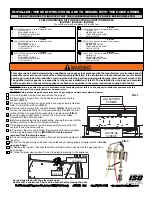
9
1
• The work imaging condition changes depending on the distance
between the sensor and a work and the tilted angle of the sensor.
When detecting a slight difference in shape, smear, or flaw of a work,
furnish more stable bracket for this sensor and design the machine so
that flattering of works is reduced as much as possible.
• Refer to the standard object distance of each model as to the distance
between this sensor and a work.
See "Specifications" on Page 65.
If the object distance is too near, the sensor becomes out of focus,
causing a irregular lighting, while it is too far, the sensor is likely to
receive the influence of the turbulence light since the light does not
reach the work.
See "Correction of Brightness Irregularity" on Page 46.
• When a work moving very fast is going to be detected, the shutter time
(brightness) has to be shortened. In such a case, make the distance
between the sensor and a work closer or add additional external
lighting since quantity of light becomes insufficient with only the light
built in this sensor.
See "Options" in Page 11.
• The shutters of the image sensor of this device open in sequence from
the right to the left in the screen. Because of this reason, the work
traveling from the right to the left is displayed wider and the one
traveling opposite is displayed narrower.
In order to detect a slight difference in shape, slow down the travel
speed of a work.
• Please note that there may be dead pixels (pixels that cannot receive
light correctly) with this image sensor. Although dead pixels may
not detect or detect incorrectly, they will not be any problem on the
practical use since they are very few.
BASIC INFORMATION BEFORE USE
Ramco Innovations
www.optex-ramco.com
phone 800-280-6933










































